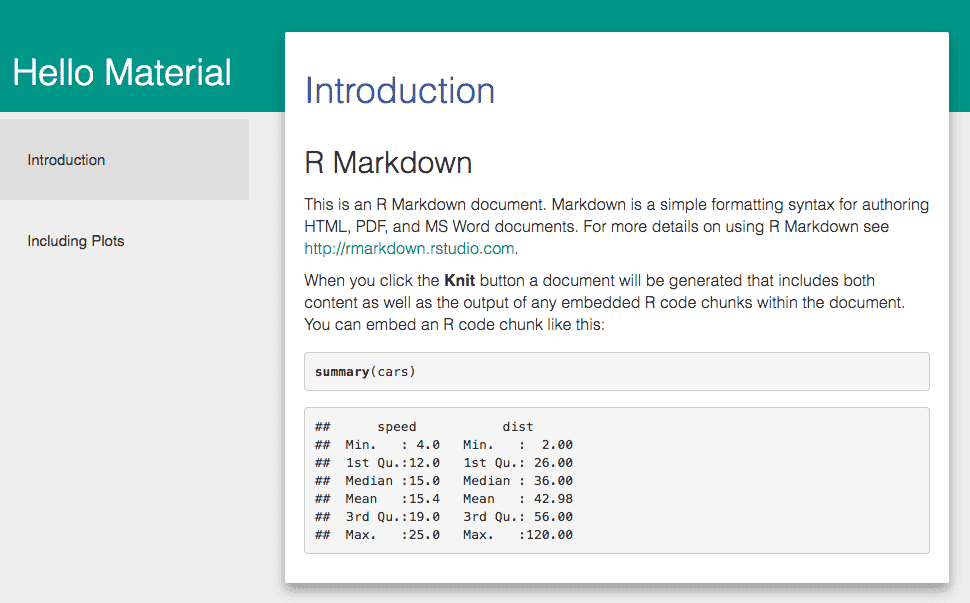

Thanks to the power of R Markdown formats, you can even use the same document for both purposes. You can use R Markdown in notebook mode for analyst-to-analyst communication, and in report mode for analyst-to-decision-maker communication. In R Markdown, you will learn about R Markdown, a tool for integrating prose, code, and results. Here are the chapters that cover R Markdown, as summarized by Hadley and Garrett: The best place to start is the “Communication” section in the book “R for Data Science” (R4DS for short), an O’Reilly book written by Hadley Wickham and Garrett Grolemund. You won’t likely be able to deal with every issue that arises, but you’ll want to consider them.If you are new to using R Markdown, we encourage you to start with a systematic overview, rather than diving right in to reading documentation pages. As you’ll be using HTML more and more the more you use R Markdown, things like this become more important. Then you have a template you can use from there on out. This is where your *.css file will come in handy, fixing 100 problems with one line of code. You can get a browser extension to see what problems your page has once it’s on the web. The default link color for my documents is just fine though. Nor was my original color when the gray background was added. Also, if your font is too light to read, or your visualizations don’t distinguish points of interest for a certain group of people, your document is less effective at communicating your ideas.Īs a simple example, when we changed the link color to dodgerblue, it might not have seemed like much, but the color was no longer sufficient contrast at the lowest web standards. For example, roughly 10% of people see color differently from ‘normal’. Not everyone interacts with the web the same way. When creating an HTML document or site and customizing things as you like, you should consider accessibility issues at some point. For example, if the document is placed in a folder like mydoc, then one could go to and view the document. What’s more, if you’re creating an HTML document, you now can put this index file, which is the complete document, on the web for easy access. You work on the individual sections separately, and when you knit the index file, all will come together. For example a paper with an introduction, results, and discussion section might have this in the index file. The index.Rmd file has the YAML and other settings, and it will also be where the other files come together.

The best way to accomplish this is to think of your document like you would a website. Your colleague can write the introduction while you work on the results, and the final paper can then be put together without conflict. A more compelling reason regards collaboration. In addition, if there is a problem with one section, you can still put the document together by just ignoring the problematic part. For one thing, only one section is data heavy, and you wouldn’t want to have to do a lot of processing every time you make a change to the document (though caching would help there). If you’re writing a lengthy document, for example, an academic article, you’ll not want to have a single *.Rmd file for the whole thing, no more than you want a single R script to do all the data preparation and analysis for it. Why you should switch from your current approach.Dynamic data analysis & report generation.


 0 kommentar(er)
0 kommentar(er)
